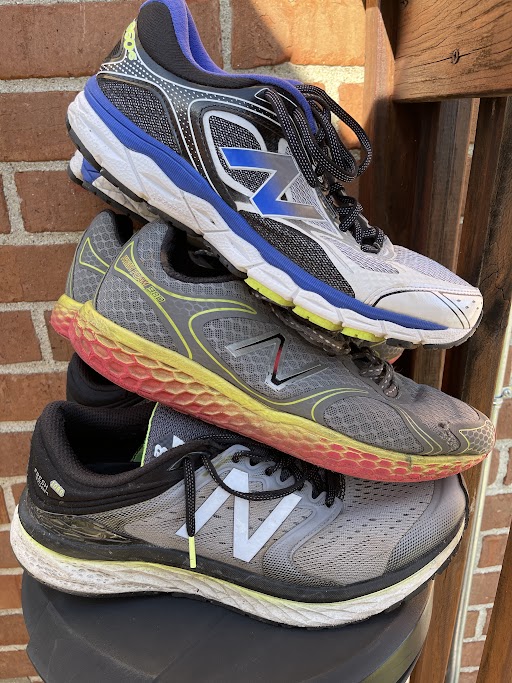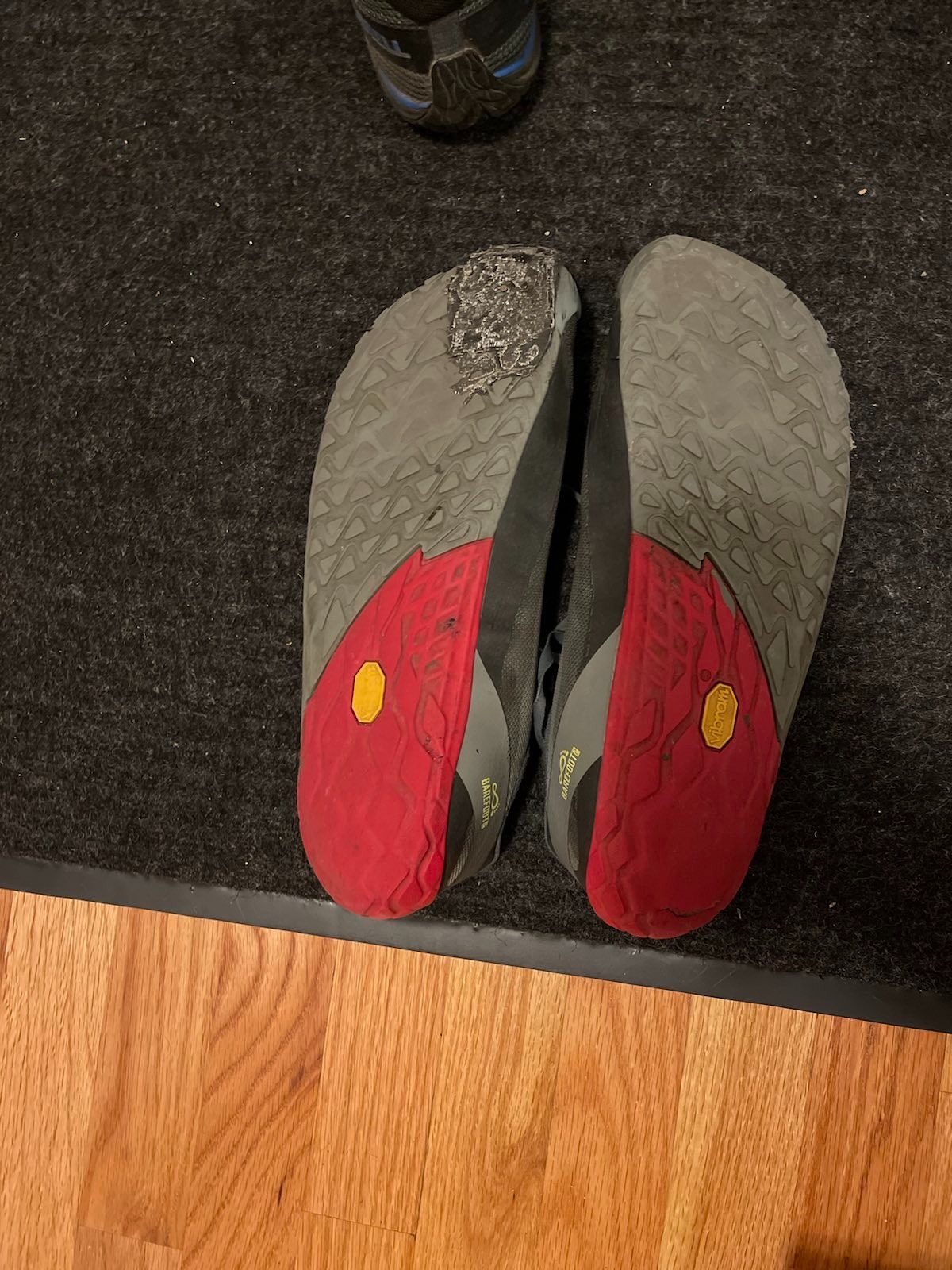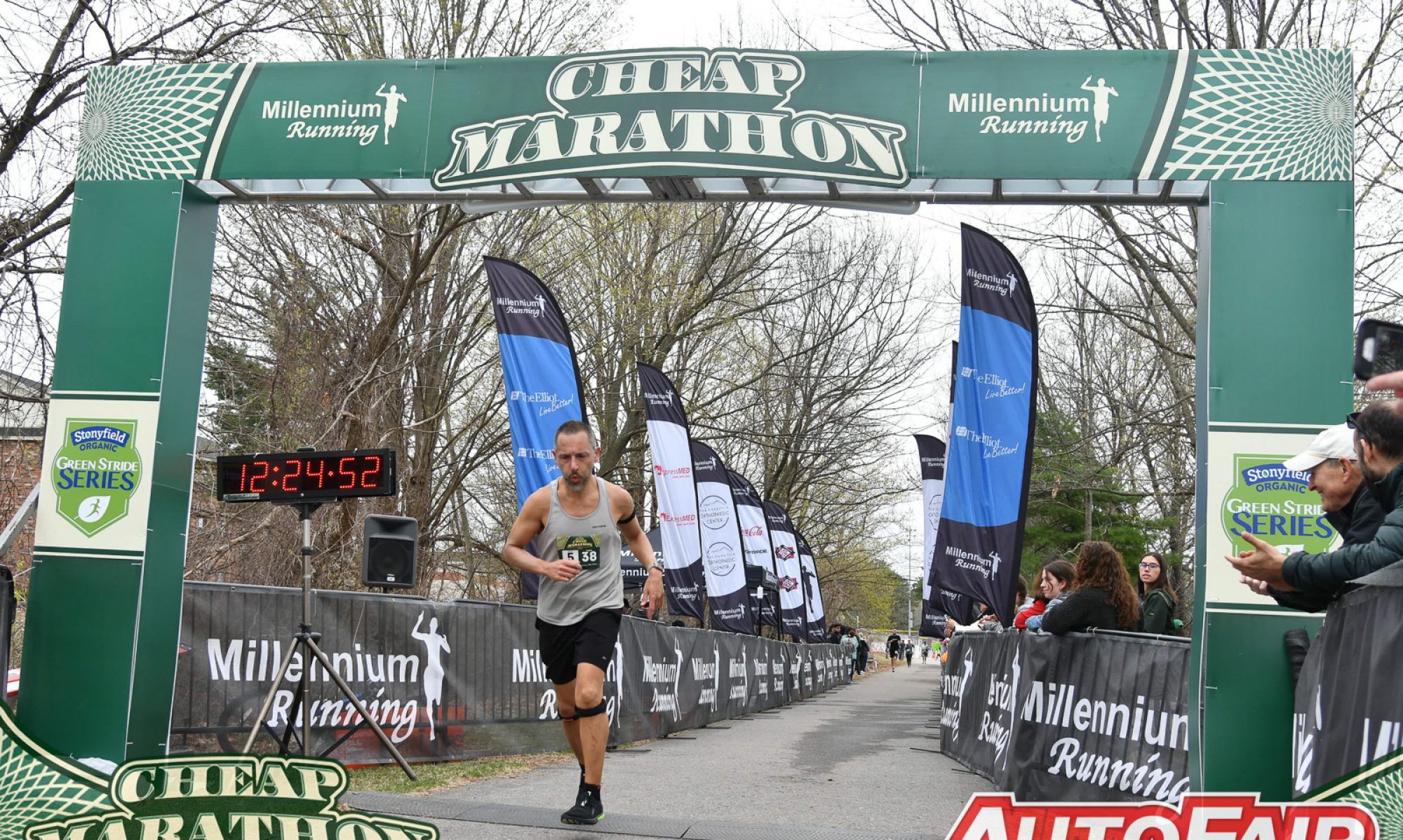
From 2017 to early 2021, my go to running shoes were the New Balance Fresh Foam 1080 (I forget if they were version 9 or 10), and a pair of the New Balance Summit Unknown for trail running. In 2020 I went on a bit of a shopping spree and was trying all sorts of New Balance shoes, as I liked the wide toe box that didn’t mash my feet. I had an old pair of the Fresh Foam 960s, and bought a pair of the Fresh Foam 980s, as well as the Fresh Foam More. I liked my shows like I like my cappuccino – fresh and foamy.
Or so I thought.
For my first couple of years running regularly (starting in late 2017), things were pretty good. Despite being told “running is bad for your knees” – the most common objection I heard to running – my knees never felt better. Given that I’ve dealt with a chronic knee injury since I was 13, I am very dialed in to my knees’ performance. I could very clearly feel them getting stronger from running.
However, I would go through regular spurts of knee pain, often around the 5 mile mark, on my regular 10K runs. This was not the norm, but it was recurring and fairly regular. Every month or two, I’d find myself taking some Ibuprofen, needing an ice pack, and having to wear a little tendon brace on my knee to alleviate the pain. I noticed this most profoundly when I would wear the pair of Fresh Foam More, which by far were the highest, cushiest ride of the bunch. Despite being lured in to the promise of a cushy experience, the end result was pain.
A slight diversion on pain versus discomfort. Anyone who’s taken one of my Yin Yoga classes will know that I am big on differentiating between pain and discomfort. They are not the same. By pain, I mean sharp, stabbing, throbbing, electric, burning sensations. Discomfort is a more dull, maybe achy, stiff, or sore. I find that discomfort is usually a sign of growth, building strength, and resilience. Pain is not “weakness leaving the body.” Pain is your body telling you to change something.
Back to my knees, which were occasionally in pain. I could feel that, overall, they were getting stronger. Coming down stairs – something I’d had to do delicately for decades, was less daunting and easier, as was squatting down and getting back up again. However, there was the occasional, recurring knee pain. It wasn’t enough to take me off my feet (for more than a little time with the ice pack), but it was there. I just took it in stride (no pun intended), and occasionally, rarely, let it make me cut my runs short and I’d walk back home instead of finishing the run.
On January 17, 2021, I received my first pair of the Merrell Vapor Glove 4. This was inspired by reading Run for Your Life by Mark Cucuzzella. A few days later, my shoes arrived. Contrary to all the advice out there, including in the book, I simply put the shoes on and went for a run in them. Thanks to a misleading description on DSW.com’s website, I thought I’d bought the “Merrell Vapor Trail Glove 4.” Newsflash – there is no “Vapor Trail Glove.” There are Vapor Gloves and there are Trail Gloves, and they are not the same. As the name implies, the Trail Glove has a sturdier, thicker sole built for dealing with sharp rocks and things you find on trails.
That’s not what I was wearing when I did a 10K loop through the Middlesex Fells Reservation. In a word, “ow.” That’s a word I repeated a lot on that run. I did a little research and found that these were not actually trail gloves. Go figure! So I tried them out on pavement instead for a 10k. My calves felt like they’d had the most intense workout since forever, and they probably had. As I was forced to no longer land on the heels when running (because that hurts without a marshmallow under them), I very, very quickly learned to land more toward the middle and front of my foot instead. Within a couple hundred feet, I’d mostly gotten the knack, and I continued on one of my usual 10k routes.
I continued to use the Vapor Glove 4 for all of my runs on pavement, and would use the New Balance Summit Unknowns for trail runs. I used them, I think, three times during the winter for trail runs. A couple of times, for comparison, I would put on the 1080s. Every time I had to wear the New Balance shows, my feet felt like I was wearing lead weights. Of course there are many factors in how you feel during and after a run, and shoes are just one of them. But in March it was enough for me to order a pair of the Trail Glove 5s. I started using these for all of my trail running in the woods.

Since January 17, I’ve worn my traditional running shoes 5 or 6 times. Yesterday, I donated the remaining New Balance Fresh Foams I had along with a couple of shirts I decided I don’t look good in. Last Sunday, I ran 20 miles in my original pair of Vapor Glove 4, which I’ve now worn holes in. I still wear them after patching up the holes with layers of Gorilla Tape, but my primary running shoe is now a pair of Vapor Glove 5s that I got a few weeks ago. I’ll be doing 20 miles in them tomorrow and running the Baystate Marathon in them a couple weeks later.
More importantly is the fact that I have had no instances of pain like I had previously when using running shoes. One day, after my first 20 mile run, I wore a tendon brace on my knee to alleviate pain in the morning. Unlike previous bouts, this passed in under an hour, as opposed to lingering for a day or more. Do I feel stiff after a long run? Yes. Is it pain? No.
The worst side-effect I’ve observed is that my right Achilles’ Tendon has gotten more stiff. This has made kneeling difficult, and caused a little loss of flexibility. Using a Yin Yoga approach, I force myself to kneel on it (definitely straying over the usual “medium to mild” range of sensation I normally prescribe), for several minutes until it becomes bearable. I’ve read that some stiffness in this tendon is common on those who adopt minimalist shoes, and tends to pass eventually. For me, it started a few months after adopting the Vapor Gloves, and has now lasted for a few months since. So I’m not saying that everything is rainbows and unicorns, but I’ll take a little stiffness in the ankle over recurring pain in the knee.
So I seem to be a bit of an outlier. I have heard all sorts of stories from people – even those who are proponents of minimalist/barefoot running – that say if you just drop your “traditional” running shoes in favor of minimalist ones, you’ll hurt yourself. Apparently I am an exception. Do I recommend everyone do what I did? No. I think easing into it probably makes more sense for most folks. Do I recommend trying barefoot/minimalist running for everyone? Whole-heartedly. Do it. Try it. Feel the difference. And understand the difference between pain and discomfort. You will feel some discomfort. This is normal. This is growth. And most of call, this is a good thing. A little discomfort means you’re getting stronger.
References:
Hundreds of miles running in Merrell Vapor Glove and Merrell Trail Glove shoes. 🙂
